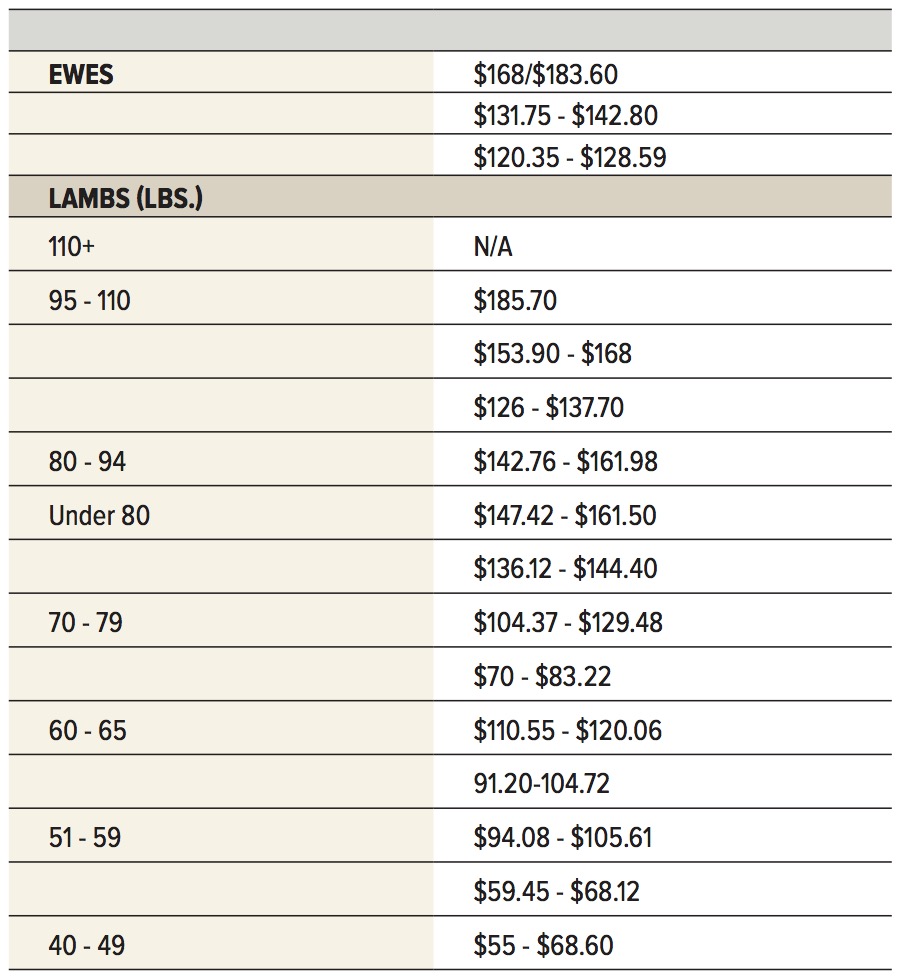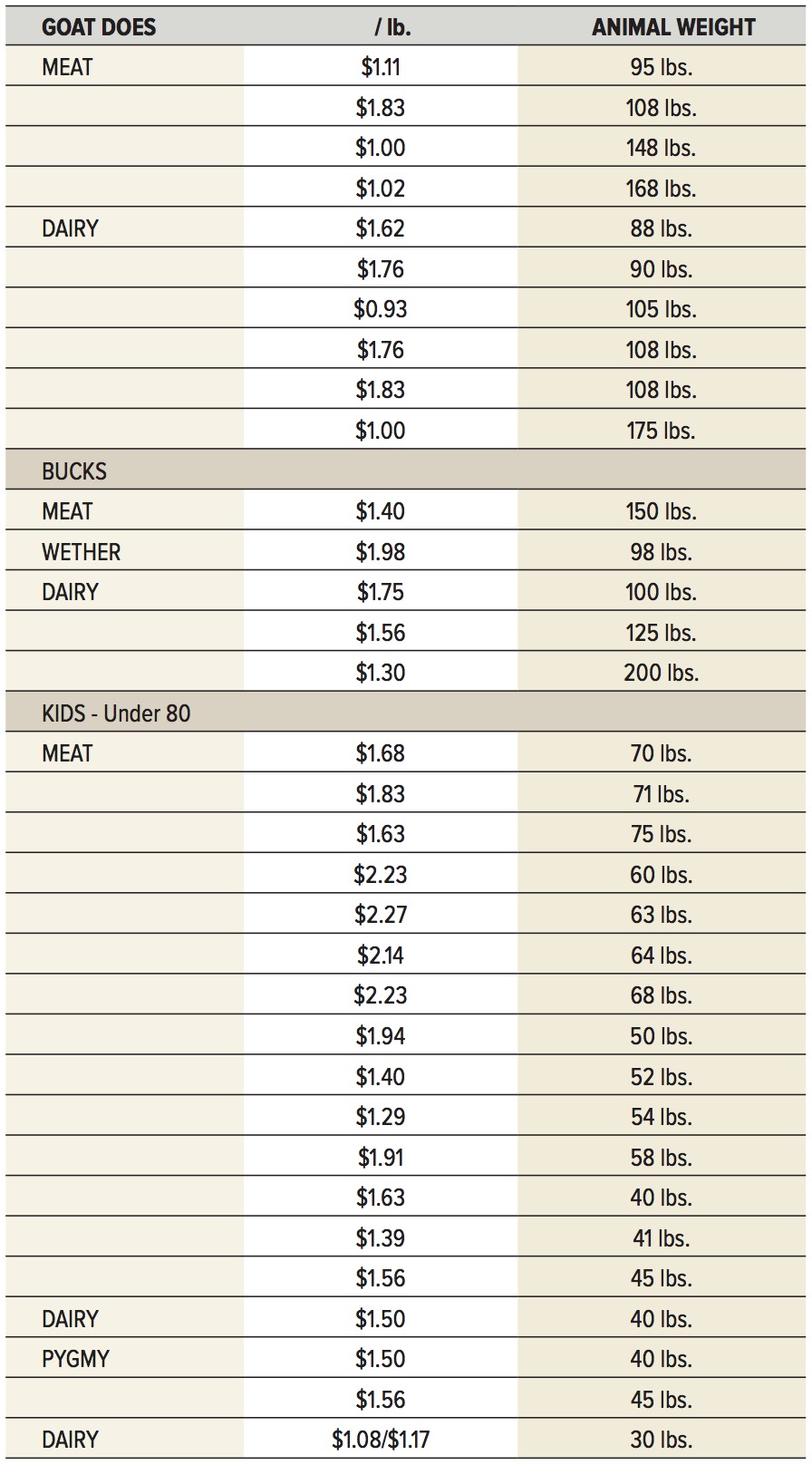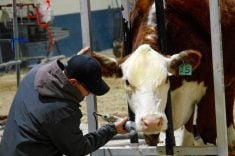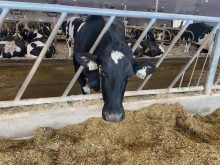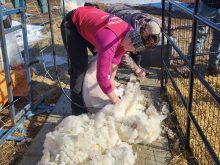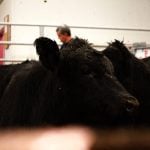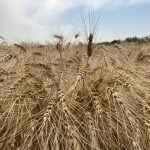As always the sheep and goat markets continue to respond to holiday demand, and the Nov. 2 sale at Winnipeg Livestock Auction was no exception. Producers offered 600 animals for sale, mainly intent on supplying the eastern Canadian market for Christmas, which requires allowing enough transport time to arrive when consumer demand peaks.
In the ewe class there was a good selection of wool and hair ewes. There appeared to be no price differences between them. At this time of the year some producers are looking to increase their herds — so age and quality are extremely important. The buyers maintained similar bidding patterns as the last sale. The price bidding was from $0.70 to $0.90 per pound.
Read Also
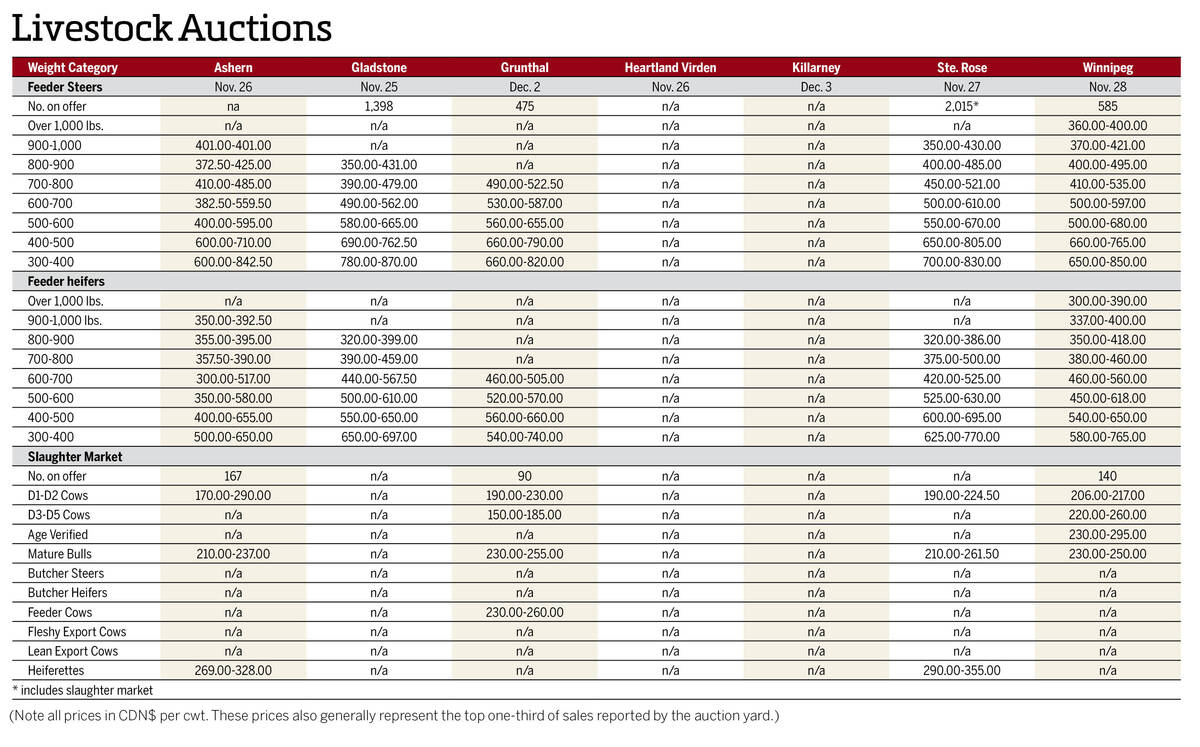
Manitoba cattle prices, Dec. 3
Cattle prices from Manitoba’s major livestock auction marts during the week Nov. 25-Dec. 2, 2025.
The selection on the rams was very limited at this sale. A 165-pound Katahdin-cross ram brought $0.91 per pound. A 185-pound Rideau-cross ram brought $0.95 per pound. A 240-pound Suffolk-cross ram brought $0.87 per pound.
There were no heavyweight lambs.
The price bidding ranged from $1.40 to $1.69 per pound for the market lambs. There appeared to be no price differences between wool and hair lambs. However, the lambs that were extremely burr infested saw a slight drop in the bidding.
Feeder lambs dominated the sale. The price ranged from $1.40 to $1.70 per pound. The presence of burrs became an issue in some groups of lambs. There appeared to be price differences between wool and hair lambs.
The selection of quality in the lightweight lambs varied — a lot. The variation in the bidding seemed to be triggered by numerous factors at this sale. Further development of some lambs could have assisted in the prices. This was especially true with the 70-plus-pound lambs. While the quality lambs had a price range from $1.57 to $1.72 per pound, many of the lambs did not reach this range.
The 60-plus-pound lambs showed similar patterns as the 70-plus-pound lambs. Further finishing of the lambs was visibly missing.
The 50-plus-pound lambs had similar issues and very more noticeable entering the arena. Development in the finishing was really required.
The 40-plus-pound lambs were of very little interest to the buyers at this sale.
The dairy goats dominated this sale along with goat kids. Alpine-cross goat does represented the majority of the dairy classification. Various buyers were interested in these does. The two 148-pound pregnant Boer goat does seemed to create less interest at this sale.
Alpine-cross bucks represented the dairy bucks at this sale. A 200-pound Alpine-cross buck showed its impressive structure entering the arena. The lighter-weight bucks received the stronger bidding. A 150-pound Kalahari Boer-cross goat buck showed its development and gentle temperament.
The goat kids class is always unpredictable in the supply for each sale. The bidding appears to be stronger whenever goat kids are available. The 70-plus goat kids had a price range from $1.63 to $1.68 per pound. Eight 71-pound goat kids brought $1.83 per pound. The bidding was stronger for the 60-plus goat kids reaching $2.14 to $2.27 per pound. Three 68-pound goat kids brought $1.94 per pound. As the goat kids decreased in weight the price bidding decreased. Some of the goat kids appeared to be underdeveloped based on their growth potential. Many of the 50-plus-pound goat kids did not reach the price range from $1.72 to $1.91 per pound. Five 45-pound Alpine-cross goat kids brought $1.30 per pound. There was very little interest for the 30-pound goat kids at this sale.
The Ontario stockyard sale report indicated that all goat classifications sold at strong interest from all buyers. The sheep and lambs sold under pressure and many times did not reach the last sale prices.

